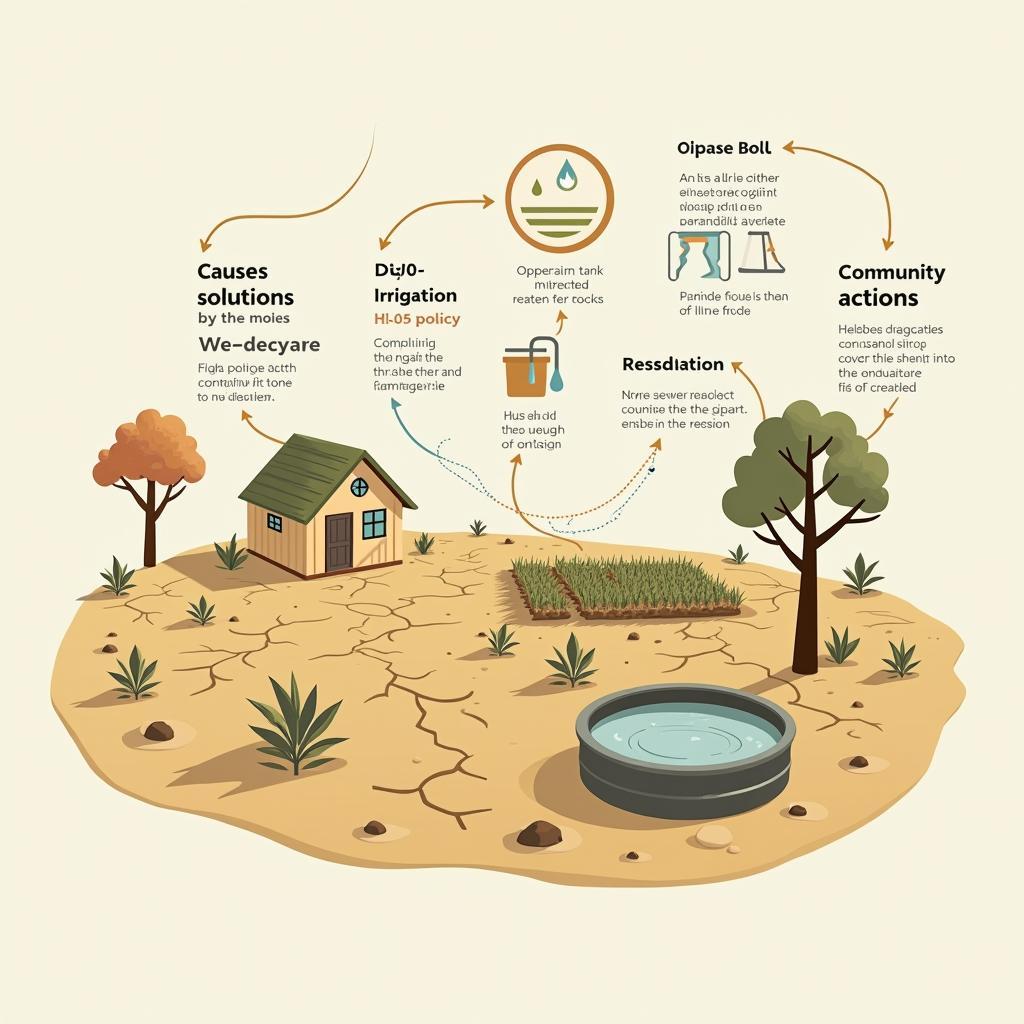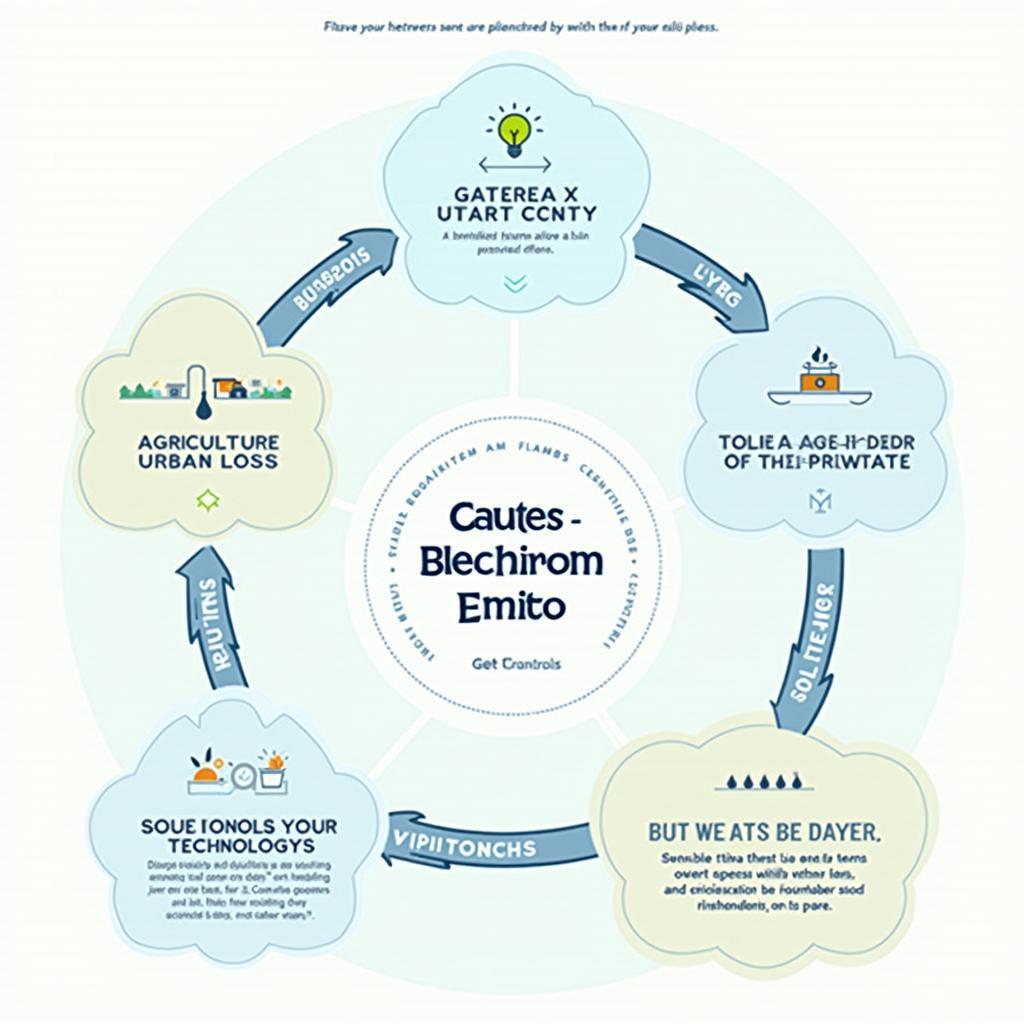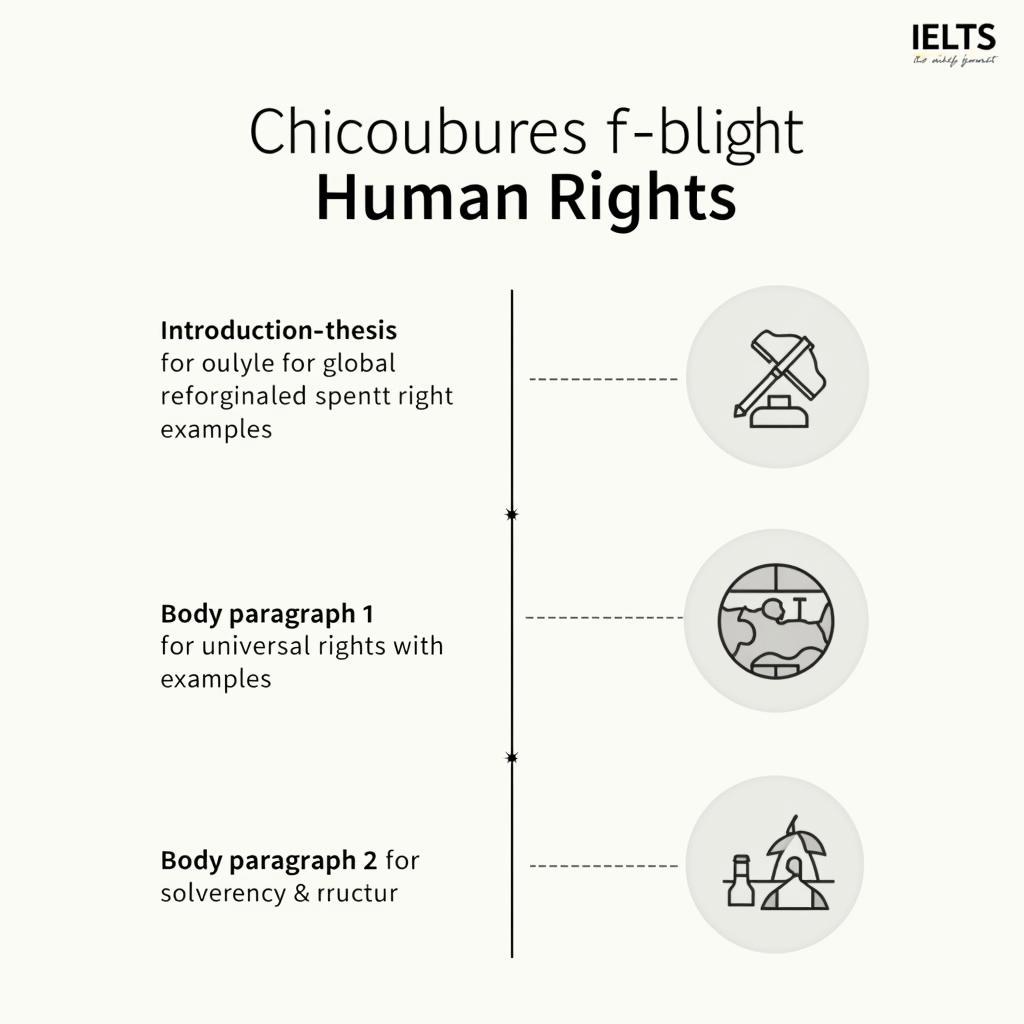Trong 20+ năm giảng dạy, tôi thấy các chủ đề về môi trường, tài nguyên nước và hạn hán xuất hiện đều đặn trong IELTS Writing Task 2. Với từ khóa Why Water Conservation Is Critical In Drought Areas, bạn sẽ dễ bắt gặp các biến thể như thiếu nước ngọt (fresh water scarcity), hạn hán kéo dài (prolonged drought), hay quản trị tài nguyên nước. Bài viết này giúp bạn: hiểu dạng đề thật, phân tích yêu cầu, đọc 3 bài mẫu (Band 8-9, 6.5-7, 5-6), học bộ từ vựng – cấu trúc ăn điểm và có checklist tự chấm.
Các đề thi/đề luyện đáng tin đã từng được công bố bởi những nguồn uy tín:
- IELTS Liz (Environment Topic Pool): “Fresh water scarcity is a pressing problem in many parts of the world. What are the causes and solutions?”
- IELTS-Blog (reported tasks): “In many countries, water is becoming scarce. Why is this occurring and what measures can be taken?”
- British Council practice tasks: “Some people argue water should be free, while others think pricing is needed to encourage conservation. Discuss both views and give your opinion.”
Để đào sâu mối liên hệ giữa bảo tồn nước và bền vững sinh thái, bạn có thể tham khảo thêm một chủ đề gần gũi: the importance of biodiversity in maintaining ecological balance. Nội dung này cho thấy việc giữ đa dạng sinh học và quản trị nước luôn đi cùng nhau trong các câu hỏi môi trường.
 Bảo tồn nước trong vùng hạn hán và chiến lược viết IELTS Writing Task 2
Bảo tồn nước trong vùng hạn hán và chiến lược viết IELTS Writing Task 2
1. Đề Writing Part 2
Fresh water scarcity is a pressing problem in many parts of the world. What are the main causes of this issue, and what measures can governments and individuals take to address it?
Dịch đề: [Thiếu nước ngọt là một vấn đề cấp bách ở nhiều nơi trên thế giới. Nguyên nhân chính của vấn đề này là gì, và chính phủ cùng cá nhân có thể thực hiện những biện pháp nào để giải quyết?]
Phân tích đề bài:
- Dạng câu hỏi: Causes – Solutions (Nguyên nhân – Giải pháp). Bạn cần viết cân đối: 1-2 nguyên nhân chủ đạo (ví dụ: biến đổi khí hậu gây hạn hán, khai thác quá mức cho nông nghiệp/đô thị), 1-2 nhóm giải pháp (chính sách + cá nhân).
- Thuật ngữ: “fresh water scarcity” (thiếu nước ngọt); “measures” (biện pháp); “address” (giải quyết/ứng phó).
- Lỗi thường gặp:
- Kể lan man, nêu quá nhiều nguyên nhân nhỏ, thiếu ví dụ cụ thể.
- Nhầm “water pollution” với “water scarcity”.
- Dùng thì sai, mạo từ a/an/the lộn xộn; thiếu giới từ đúng (e.g., invest in, rely on).
- Cách tiếp cận:
- Mở bài: Paraphrase đề + nêu quan điểm tổng quát.
- Thân bài 1: 2 nguyên nhân chính, có ví dụ (vùng hạn như Sahel, Tây Nam Hoa Kỳ, Tây Nguyên mùa khô).
- Thân bài 2: Chính sách (giá nước theo bậc thang, đầu tư bể chứa, chống thất thoát) + cá nhân (tiết kiệm, tái sử dụng greywater).
- Kết bài: Tóm tắt, nhấn mạnh tầm quan trọng của water conservation trong vùng hạn.
2. Bài mẫu Band 8-9 – why water conservation is critical in drought areas
Giới thiệu: Bài Band 8-9 cần lập luận sắc sảo, mạch lạc, từ vựng học thuật linh hoạt, ví dụ cụ thể và kiểm soát ngữ pháp tốt. Chiến lược: topic sentence rõ ràng, phát triển ý logic, dùng liên kết tinh tế.
Bài luận (khoảng 300 từ):
In many regions, especially those prone to prolonged drought, water scarcity has shifted from an environmental warning to a lived reality. At its core, the crisis stems from a collision of climate volatility and unsustainable consumption patterns. As heatwaves intensify and rainfall becomes erratic, aquifers recharge more slowly while demand, driven by population growth and thirsty crops, relentlessly climbs. In such contexts, understanding why water conservation is critical in drought areas is not a rhetorical exercise but a prerequisite for survival.
A principal cause is the water–agriculture nexus. In dry belts, flood irrigation remains common, bleeding away scarce supplies through evaporation and runoff. Urban systems compound the strain: leaking pipes, unmetered use, and cheap tariffs signal that water is abundant when it is not. Meanwhile, climate change acts as a force multiplier, shrinking snowpacks that once guaranteed steady river flows and intensifying multi-year drought cycles.
Multi-level solutions are therefore indispensable. Governments should adopt tiered pricing to discourage waste while shielding basic needs, mandate leak detection and pressure management in municipal networks, and subsidize drip irrigation alongside drought-resistant cultivars. Urban planning can mainstream rainwater harvesting and greywater reuse in building codes. Individuals, for their part, can replace lawns with native xeriscapes, install low-flow fixtures, and time household use to off-peak supply windows. Crucially, behavior change is more durable when framed through community norms—for instance, neighborhood reporting of leaks or gamified dashboards that compare per-capita use.
Ultimately, water security in arid regions hinges less on heroic new supply than on disciplined demand management. Conservation is not austerity; it is smart allocation that preserves ecological flows, buffers against climate shocks, and keeps essential services affordable. In drought-prone landscapes, that is the difference between resilience and recurring crisis.
Phân tích Band điểm
| Tiêu chí | Band | Nhận xét |
|---|---|---|
| Task Response (Hoàn thành yêu cầu) | 8.5 | Trả lời đầy đủ: nêu rõ nguyên nhân (nông nghiệp, đô thị, khí hậu) và giải pháp (chính sách, công nghệ, cá nhân). Luận điểm nhất quán, có thông điệp về quản lý nhu cầu. |
| Coherence & Cohesion (Mạch lạc & Liên kết) | 8.0 | Bố cục rõ: bối cảnh → nguyên nhân → giải pháp → kết luận. Liên kết logic bằng từ nối và lặp ngữ nghĩa tinh tế; không lạm dụng “firstly/secondly”. |
| Lexical Resource (Từ vựng) | 8.5 | Vốn từ học thuật phong phú: “force multiplier”, “tiered pricing”, “demand management”, “xeriscapes”. Collocations chính xác, hầu như không lỗi dùng từ. |
| Grammatical Range & Accuracy (Ngữ pháp) | 8.0 | Câu phức đa dạng, mệnh đề quan hệ, cụm phân từ dùng chính xác. Lỗi ngữ pháp nếu có rất nhỏ, không ảnh hưởng hiểu. |
Các yếu tố giúp bài này được chấm điểm cao
- Luận điểm trung tâm rõ: ưu tiên quản lý nhu cầu hơn mở rộng nguồn cung.
- Ví dụ cụ thể và “có tính chính sách”: tiered pricing, leak detection, drip irrigation.
- Dùng thuật ngữ môi trường chính xác: aquifers recharge, snowpacks, xeriscapes.
- Liên kết ý mềm mại qua khái niệm “force multiplier” và “nexus”.
- Cân bằng vai trò: chính phủ, đô thị, nông nghiệp, cá nhân.
- Kết luận gợi suy ngẫm, tránh sáo rỗng: “resilience vs recurring crisis.”
 Chiến lược viết causes-solutions và ví dụ bảo tồn nước hạn hán
Chiến lược viết causes-solutions và ví dụ bảo tồn nước hạn hán
3. Bài mẫu Band 6.5-7 – why water conservation is critical in drought areas
Giới thiệu: Band 6.5-7 có luận điểm rõ, phát triển ý đủ, từ vựng khá đa dạng nhưng đôi khi lặp; ngữ pháp có lỗi nhỏ nhưng ý nghĩa không bị cản trở.
Bài luận (khoảng 265 từ):
Fresh water is becoming scarce in many countries, especially where drought happens regularly. The main reasons include climate change, inefficient water use in agriculture and cities, and the wrong price signals that make people think water is cheap. Therefore, understanding why water conservation is critical in drought areas can guide both policy and daily habits.
Firstly, farming consumes the largest share of water, yet traditional flood irrigation is still popular. This method loses a lot of water through evaporation and runoff, which is unacceptable in dry regions. Secondly, urban systems often waste water because of leaking pipes and poor maintenance. If water is heavily subsidized and not metered properly, households and businesses have little motivation to save. Finally, climate change reduces predictable rainfall and snow, so rivers and groundwater cannot recover quickly after each dry season.
To tackle these problems, governments should invest in drip irrigation and support farmers to grow drought-resistant crops. Cities need to fix leaks, install smart meters, and adopt tiered pricing to protect basic use while discouraging waste. On the individual level, people can install low-flow devices, collect rainwater for gardens, and reuse greywater when possible. Public campaigns in schools and communities can also build long-term awareness.
In conclusion, water scarcity has multiple causes, but practical measures exist at every level. With better technology, sensible pricing, and consistent education, both governments and individuals can reduce demand and make supplies last longer, even in periods of severe drought.
Phân tích Band điểm
| Tiêu chí | Band | Nhận xét |
|---|---|---|
| Task Response (Hoàn thành yêu cầu) | 7.0 | Trả lời đúng dạng đề, có nguyên nhân và giải pháp rõ; ví dụ còn chung chung, cần thêm số liệu/địa danh cụ thể để thuyết phục hơn. |
| Coherence & Cohesion (Mạch lạc & Liên kết) | 7.0 | Chia đoạn hợp lý, liên kết cơ bản tốt; vài chỗ lặp từ “water” dày, có thể dùng từ thay thế để mượt hơn. |
| Lexical Resource (Từ vựng) | 6.5 | Dùng được “tiered pricing”, “greywater”, “drought-resistant”, nhưng vẫn lặp “scarce/ save/ waste”; có thể đa dạng hóa bằng “conserve/ curtail/ allocate”. |
| Grammatical Range & Accuracy (Ngữ pháp) | 6.5 | Cấu trúc câu đa dạng vừa phải; còn thiên về simple/compound, ít mệnh đề quan hệ nâng cao; 1-2 lỗi dấu phẩy nhẹ. |
So sánh với bài Band 8-9
- Bài 8-9 có khung lập luận sắc nét hơn (nexus, force multiplier), còn bài 6.5-7 diễn đạt trực tiếp, ít tầng nghĩa.
- Bài 8-9 dùng ví dụ và chính sách cụ thể; bài 6.5-7 thiên về liệt kê giải pháp chung.
- Từ vựng học thuật ở bài cao band linh hoạt hơn và collocations tự nhiên hơn.
4. Bài mẫu Band 5-6
Giới thiệu: Band 5-6 thường có ý tưởng đúng hướng nhưng phát triển hạn chế, mạch lạc còn yếu, từ vựng lặp, lỗi ngữ pháp rõ (mạo từ, thì, giới từ, subject-verb agreement).
Bài luận (khoảng 255 từ, có đánh dấu lỗi):
Water shortage is a big problem in many places, especially where drought is common. The causes are many. People use too much waters in cities and farms, and climate change make the rain less regular. Also, government do not control the price and there is many leak in the system.
In agriculture, farmers often use flood irrigation which is very waste. They should to use drip system to save water. In cities, pipes are old and broken, but nobody repair it fastly. If water is cheap, people take long showers and wash cars every day. This things make the problem worse.
To solve, governments must invest more money for infrastructure and give a education to public. They can also make a law for people cannot use too much water. Individuals should stop to waste and use water careful. In drought areas, saving water is important because without it, people cannot live and agriculture will be die.
In conclusion, there are many reasons for water scarcity, and both governments and people have responsibility. If we act together, the situation will be better in the future.
Phân tích Band điểm
| Tiêu chí | Band | Nhận xét |
|---|---|---|
| Task Response (Hoàn thành yêu cầu) | 5.5 | Có nhắc nguyên nhân – giải pháp nhưng phát triển nông, thiếu ví dụ và lập luận; kết luận chung chung. |
| Coherence & Cohesion (Mạch lạc & Liên kết) | 5.5 | Ý liên quan nhưng chuyển đoạn đột ngột; lặp từ nhiều, ít dùng từ nối; thiếu topic sentences rõ. |
| Lexical Resource (Từ vựng) | 5.5 | Từ vựng đơn giản, trùng lặp; collocations sai/không tự nhiên: “a education”, “use water careful”. |
| Grammatical Range & Accuracy (Ngữ pháp) | 5.0 | Lỗi mạo từ, số ít/số nhiều, thì và giới từ; ít câu phức; lỗi ảnh hưởng đến độ rõ ràng. |
Những lỗi sai của bài – phân tích & giải thích
| Lỗi sai | Loại lỗi | Sửa lại | Giải thích |
|---|---|---|---|
| People use too much waters | Danh từ không đếm được | People use too much water | “Water” không đếm được → không thêm “s”. |
| government do not | Hòa hợp chủ-vị | the government does not | Chủ ngữ số ít “government” → “does”. |
| there is many leak | Hòa hợp/đếm được | there are many leaks | “Many” + danh từ số nhiều; “there are”. |
| very waste | Từ loại | very wasteful | Cần tính từ “wasteful”, không dùng “waste”. |
| They should to use | Cấu trúc động từ khuyết thiếu | They should use | “Should” + V nguyên mẫu, không “to”. |
| nobody repair it fastly | Trạng từ | nobody repairs it quickly | “Repair” chia số ít; “fastly” sai → “quickly”. |
| This things | Số ít/số nhiều | These things | “Things” số nhiều → “these”. |
| a education | Mạo từ | education / an education program | “Education” thường không đếm được; nếu chỉ “program” thì “an education program”. |
| make a law for people cannot use | Cấu trúc | pass laws to prevent people from using | Dùng cụm chính xác “pass laws to prevent sb from V-ing”. |
| stop to waste | V-ing/to V | stop wasting | “Stop doing” = dừng hành vi đang diễn ra. |
| use water careful | Từ loại | use water carefully | Cần trạng từ “carefully”. |
| agriculture will be die | Sai dạng động từ | agriculture will die / crops will die | “Die” là động từ nội động; không dùng “be die”. |
Cách Cải Thiện Từ Band 6 Lên Band 7
- Tổ chức ý: Mỗi đoạn có topic sentence, 2-3 câu phát triển, ví dụ cụ thể.
- Từ vựng: Học collocations theo chủ điểm (tiered pricing, leak detection, drip irrigation). Tránh lặp “use/save water”.
- Ngữ pháp: Luyện câu phức với mệnh đề phụ thuộc, mệnh đề quan hệ; sửa triệt để lỗi mạo từ và hòa hợp chủ-vị.
- Liên kết: Dùng từ nối tinh tế (therefore, in turn, by contrast); tránh liệt kê khô khan.
- Ví dụ địa phương: Nêu bối cảnh Việt Nam (mùa khô Tây Nguyên, xâm nhập mặn Đồng bằng sông Cửu Long) để tăng tính thuyết phục.
5. Từ vựng quan trọng cần nhớ cho why water conservation is critical in drought areas
| Từ/Cụm từ | Loại từ | Phiên âm | Nghĩa tiếng Việt | Ví dụ (tiếng Anh) | Collocations |
|---|---|---|---|---|---|
| water scarcity | n. | /ˈwɔːtər ˈskeəsəti/ | thiếu nước | Water scarcity threatens public health in arid regions. | severe/chronic water scarcity |
| drought-prone | adj. | /ˈdraʊt prəʊn/ | dễ bị hạn hán | Drought-prone areas need stricter conservation rules. | drought-prone regions/zones |
| aquifer | n. | /ˈækwɪfə(r)/ | tầng chứa nước | Over-pumping the aquifer leads to land subsidence. | recharge/deplete aquifers |
| tiered pricing | n. | /tɪəd ˈpraɪsɪŋ/ | giá nước theo bậc thang | Tiered pricing discourages waste without harming the poor. | adopt/implement tiered pricing |
| leak detection | n. | /liːk dɪˈtɛkʃən/ | phát hiện rò rỉ | Leak detection programs can save millions of liters. | conduct/roll out leak detection |
| drip irrigation | n. | /drɪp ˌɪrɪˈgeɪʃn/ | tưới nhỏ giọt | Drip irrigation cuts evaporation losses dramatically. | install/upgrade to drip irrigation |
| greywater reuse | n. | /ˈgreɪwɔːtə rɪˈjuːz/ | tái sử dụng nước xám | Greywater reuse is ideal for gardening. | promote/mandate greywater reuse |
| demand management | n. | /dɪˈmɑːnd ˈmænɪdʒmənt/ | quản lý nhu cầu | Demand management is cheaper than new dams. | effective/strategic demand management |
| drought-resistant | adj. | /ˈdraʊt rɪˈzɪstənt/ | chịu hạn | Drought-resistant crops stabilize yields. | adopt/plant drought-resistant varieties |
| xeriscaping | n. | /ˈzɪərɪskeɪpɪŋ/ | cảnh quan khô hạn tiết kiệm nước | Xeriscaping reduces outdoor water use. | adopt/design xeriscaping |
| unaccounted-for water | n. | /ˌʌnəˈkaʊntɪd fɔː/ | nước thất thoát | Cities must cut unaccounted-for water to 15%. | reduce/monitor unaccounted-for water |
| price signal | n. | /praɪs ˈsɪɡnəl/ | tín hiệu giá | Weak price signals encourage overuse. | distort/strengthen price signals |
| curtail | v. | /kɜːˈteɪl/ | cắt giảm | Households can curtail non-essential use. | curtail consumption/waste |
| in turn | linking | /ɪn tɜːn/ | lần lượt, do đó | Tiered pricing reduces waste, which in turn delays shortages. | — |
| by contrast | linking | /baɪ ˈkɒntrɑːst/ | trái lại | By contrast, flood irrigation wastes water. | — |
| scarce = limited | syn. | /skeəs/ = /ˈlɪmɪtɪd/ | khan hiếm | Scarce resources must be allocated wisely. | scarce resources/supplies |
| conserve = save | syn. | /kənˈsɜːv/ = /seɪv/ | tiết kiệm | We must conserve water during drought. | conserve water/energy |
Lưu ý phát âm: nhấn đúng trọng âm để nhớ lâu; luyện qua shadowing 1-2 phút/ngày.
6. Cấu trúc câu dễ ăn điểm cao
- Câu phức với mệnh đề phụ thuộc
- Công thức: Mệnh đề chính + because/while/although + mệnh đề phụ.
- Ví dụ từ bài Band 8-9: Although rainfall becomes erratic, demand relentlessly climbs.
- Vì sao ghi điểm: Làm rõ quan hệ nhân quả/đối lập, tăng logic.
- Ví dụ bổ sung:
- Because aquifers recharge slowly, authorities must manage demand.
- While subsidies aim to help, they can distort price signals.
- Lỗi thường gặp: Dùng “because of” với mệnh đề; đúng là “because + clause”, “because of + noun”.
- Mệnh đề quan hệ không xác định (non-defining relative clause)
- Công thức: Danh từ, which/who + mệnh đề phụ, mệnh đề chính.
- Ví dụ: Tiered pricing, which discourages waste, protects basic needs.
- Điểm cao: Bổ sung thông tin mượt, văn phong học thuật.
- Ví dụ bổ sung:
- Greywater reuse, which is inexpensive, suits households.
- Drip irrigation, which reduces evaporation, is effective.
- Lỗi thường gặp: Quên dấu phẩy; dùng “that” thay “which” trong mệnh đề không xác định.
- Cụm phân từ
- Công thức: V-ing/V-ed + cụm bổ nghĩa, mệnh đề chính.
- Ví dụ: Acting as a force multiplier, climate change worsens shortages.
- Điểm cao: Cô đọng ý, nhịp văn linh hoạt.
- Ví dụ bổ sung:
- Driven by cheap tariffs, consumption increases.
- Designed for arid zones, xeriscapes save water.
- Lỗi thường gặp: Treo chủ ngữ (dangling modifiers) – chủ thể phải trùng nhau.
- Câu chẻ (Cleft sentences)
- Công thức: It is/was + thành phần nhấn mạnh + that/who + mệnh đề.
- Ví dụ: It is demand management that ensures long-term resilience.
- Điểm cao: Nhấn mạnh trọng tâm, tăng thuyết phục.
- Ví dụ bổ sung:
- It is leak reduction that cities should prioritize.
- It is tiered pricing that changes behavior.
- Lỗi thường gặp: Lạm dụng gây nặng nề; chỉ dùng khi cần nhấn mạnh.
- Câu điều kiện nâng cao (mixed/3rd)
- Công thức: If + had + V3, would + V (hiện tại) → bài học/giả định.
- Ví dụ: If cities had invested earlier, they would face fewer shortages now.
- Điểm cao: Nhìn nhận hệ quả dài hạn, sắc thái tinh tế.
- Ví dụ bổ sung:
- If farmers had adopted drip systems, losses would be lower today.
- If pricing had been tiered, demand would be flatter now.
- Lỗi thường gặp: Nhầm “would have V3” khi nói hệ quả hiện tại.
- Đảo ngữ nhấn mạnh
- Công thức: Only by/Not until/Seldom + trợ động + S + V.
- Ví dụ: Only by fixing leaks can cities stabilize supply.
- Điểm cao: Nhấn trọng tâm, đa dạng hóa cấu trúc.
- Ví dụ bổ sung:
- Not until tariffs rise will consumption fall.
- Seldom do households track their daily usage.
- Lỗi thường gặp: Quên đảo trợ động; dùng sai thì.
7. Checklist Tự Đánh Giá
-
Trước khi viết:
- Xác định dạng đề (Causes–Solutions? Discussion? Opinion?).
- Ghi 2 nguyên nhân – 2 giải pháp then chốt; ví dụ cụ thể liên quan hạn hán.
- Lập dàn ý 3-4 phút, phân bổ từ 260-310 từ.
-
Trong khi viết:
- Mở bài paraphrase + lập trường rõ.
- Mỗi đoạn thân có topic sentence + 2-3 câu phát triển + 1 ví dụ.
- Dùng từ nối tinh tế: therefore, in turn, by contrast, consequently.
- Kiểm tra mạo từ (a/an/the), giới từ (invest in, rely on), hòa hợp chủ-vị.
-
Sau khi viết:
- Soát lỗi dễ dính: số ít/số nhiều (leaks, crops), chính tả (their/there).
- Cắt lặp từ; thay bằng collocations/đồng nghĩa.
- Đếm từ; đảm bảo 250+.
-
Mẹo quản lý thời gian:
- 3-4’ dàn ý; 30’ viết; 4-5’ soát.
- Viết câu chủ đề trước, chi tiết sau; đừng kẹt ở mở bài quá lâu.
- Ưu tiên rõ ràng hơn hoa mỹ; ví dụ cụ thể hơn lý thuyết chung.
Kết bài
Bạn vừa đi qua toàn bộ chiến lược chinh phục đề IELTS Writing Task 2 về why water conservation is critical in drought areas: từ nhận diện dạng đề, đọc ba bài mẫu theo thang band 5-9, phân tích chấm điểm, đến kho từ vựng – cấu trúc ăn điểm và checklist thực chiến. Con đường cải thiện rõ ràng: luyện dàn ý nhanh, diễn đạt chính xác bằng collocations, củng cố ngữ pháp trọng yếu, và phản hồi dựa trên tiêu chí chấm chính thức. Hãy viết 2-3 bài/tuần, nhờ bạn học hoặc giáo viên nhận xét, và tự soát theo checklist ở trên trong 6-8 tuần để thấy tiến bộ bền vững.
Để mở rộng nền tảng kiến thức môi trường và hệ sinh thái – vốn rất hay xuất hiện song hành với chủ đề nước – bạn có thể đọc thêm về the importance of biodiversity in maintaining ecological balance; điều này giúp bạn lấy ví dụ tự nhiên, thuyết phục hơn. Tôi khuyến khích bạn luyện một bài theo đề ở mục 1, đăng trong nhóm học hoặc lớp để nhận phản hồi. Việc duy trì thói quen viết, đọc bài mẫu chất lượng và tra cứu collocations theo chủ điểm sẽ đưa bạn đến band mục tiêu một cách chắc chắn và hiệu quả.


